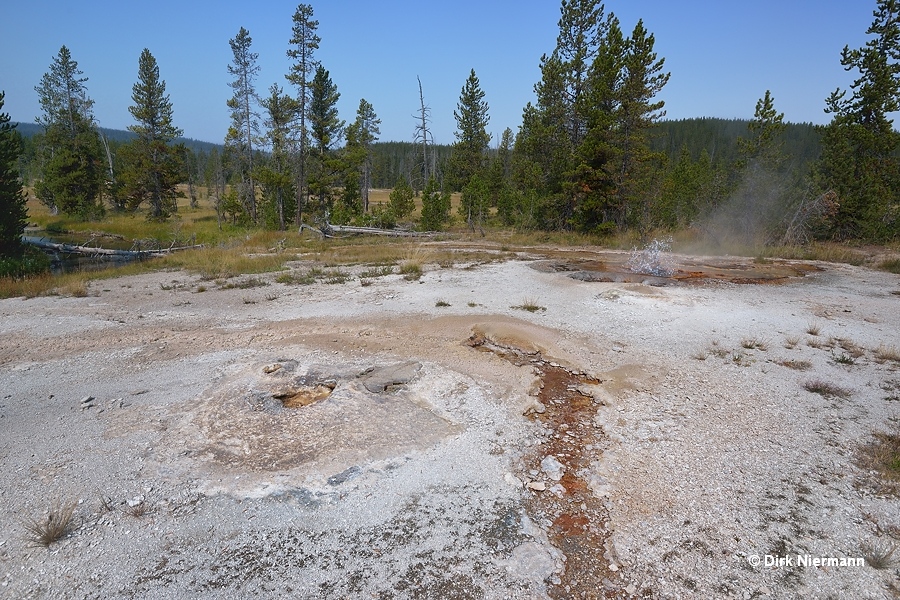Shoshone Geyser Basin, Little Giant Group
The first thermal features you come across if you enter the basin from the north are belonging to Little Giant Group. On the left side of the trail an exposed, nearly 1 m (3 feet) high sinter cone of the Sulphur Springs welcomes the hiker like a petrified butler.
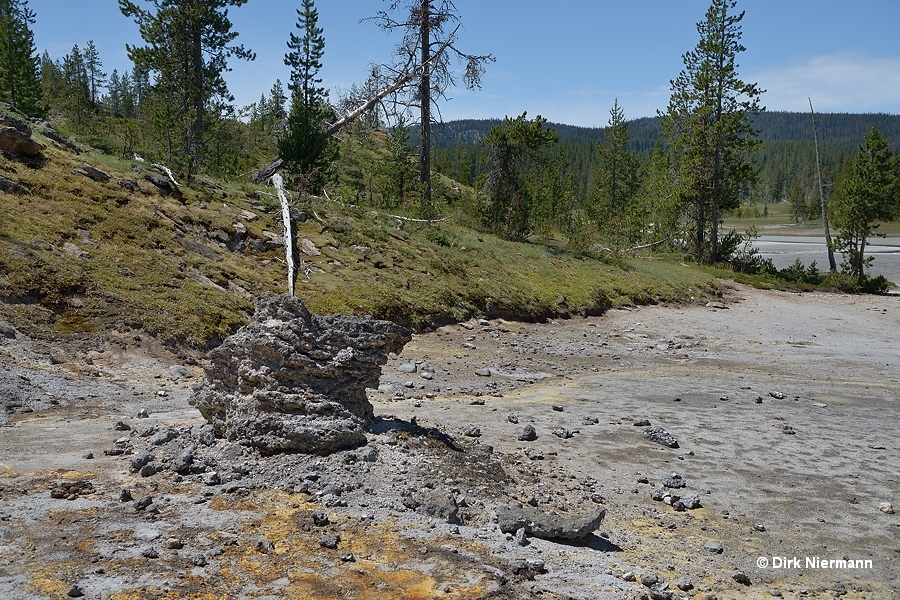
A short distance farther south the Horse Trail Springs show up next to the trail. One of them, SLGGNN006, the feature closest to the trail, is a weak but frequent spouter.
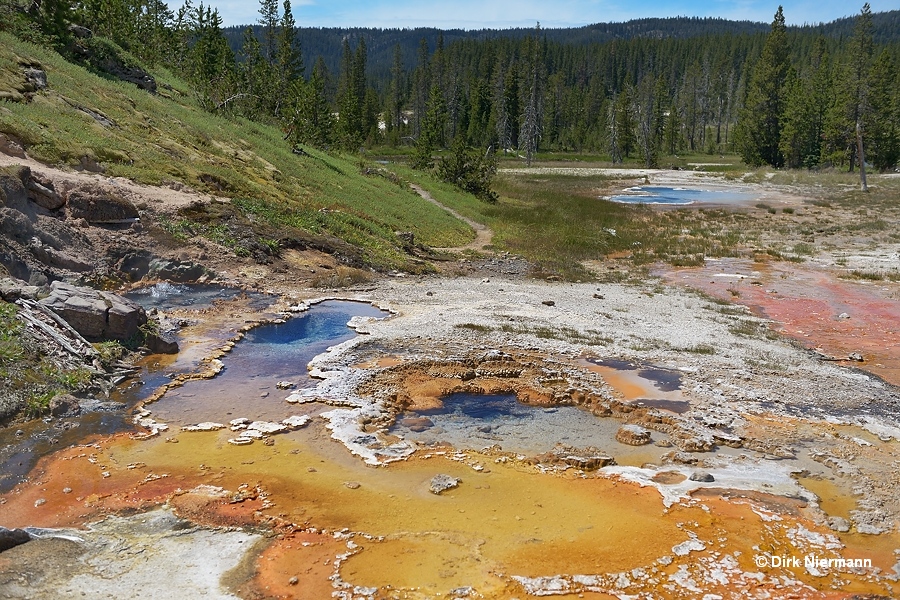
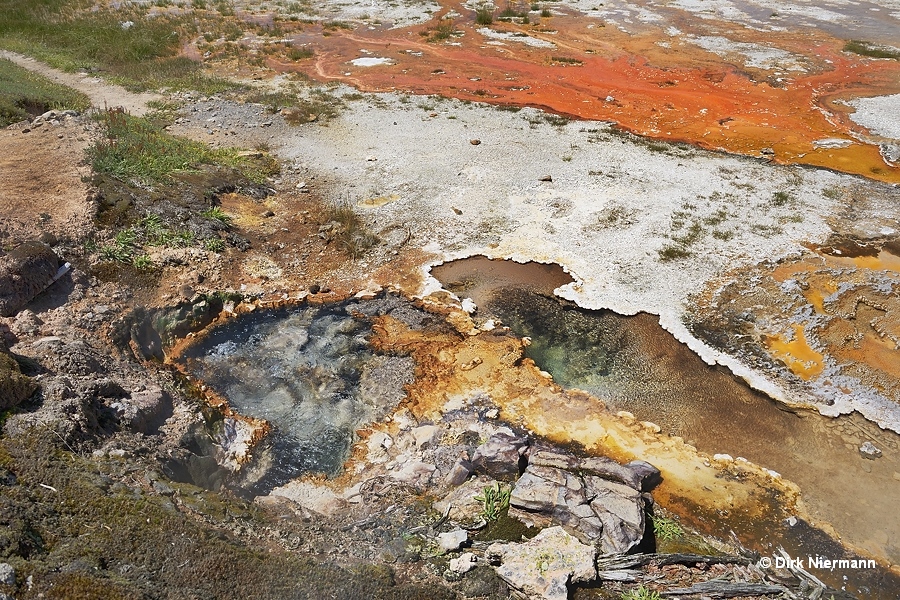
Trailside Geyser, adjoining the Horse Trail Springs to the west, is slightly stronger than SLGGNN006 and erupts up to three times within 30 minutes.
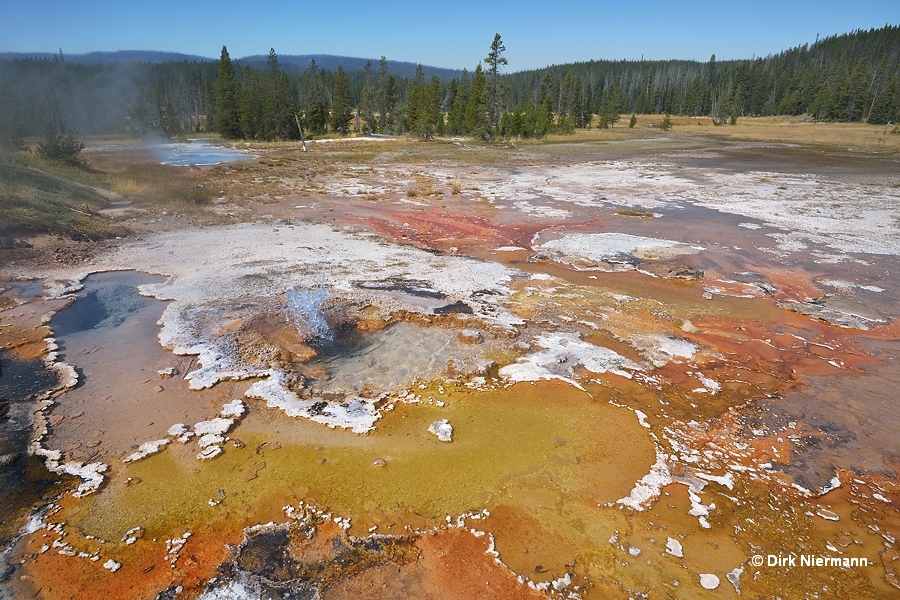
Trailside Geyser's runoff is home of some small vents, which may also erupt from time to time.
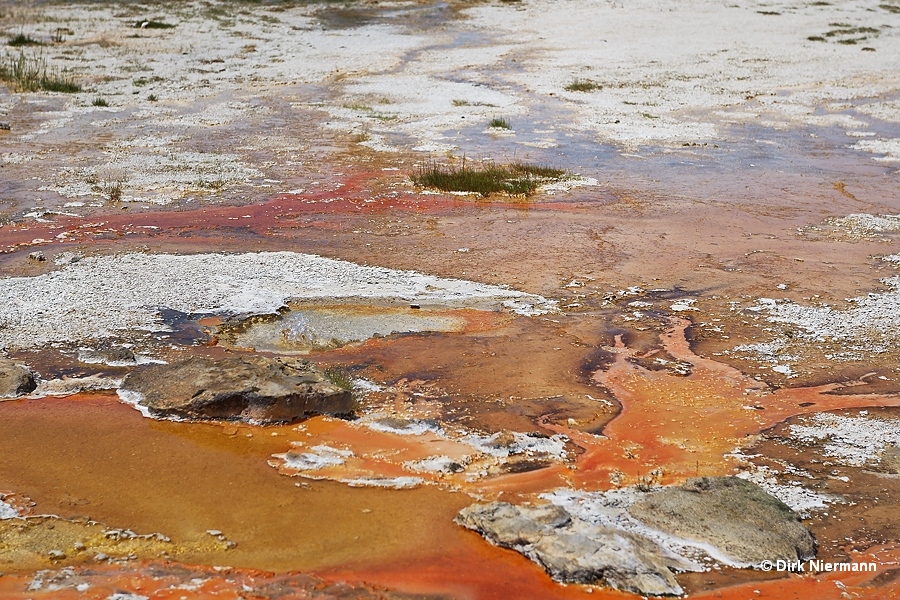
Next notable features along the trail are the two blue pools SLGGNN026 and SLGGNN027.
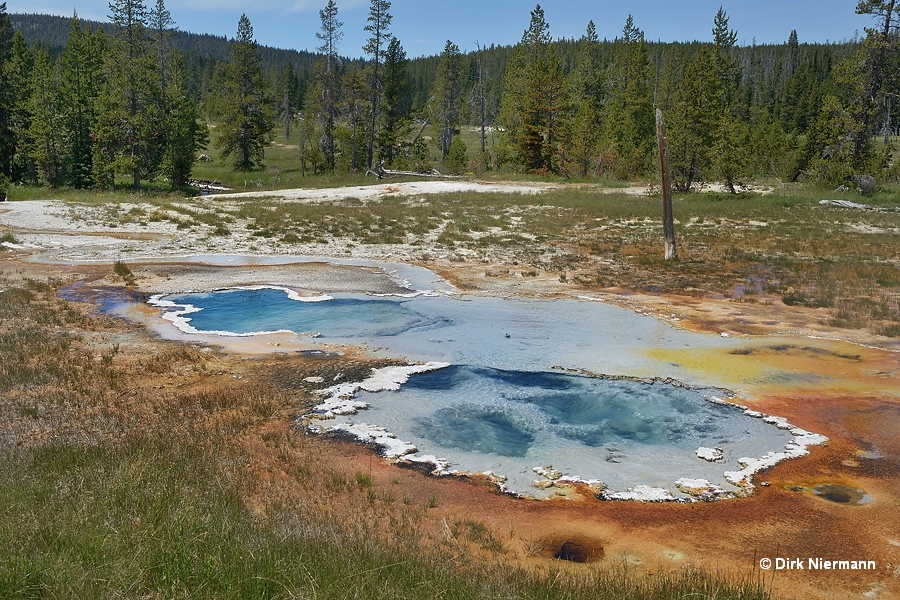
The bank of Shoshone Creek within Little Giant Group is occupied by further geysers. Namesake of the group is Little Giant Geyser. The last minor eruptions up to 6 feet height were reported in 2006, major eruptions ceased already shortly after the 1959 earthquake. The deep, ragged crater on the right (west) side of Little Giant's vent developed step by step since 2009. The washout indicates that forceful spouting activity must have taken place in summer 2013.
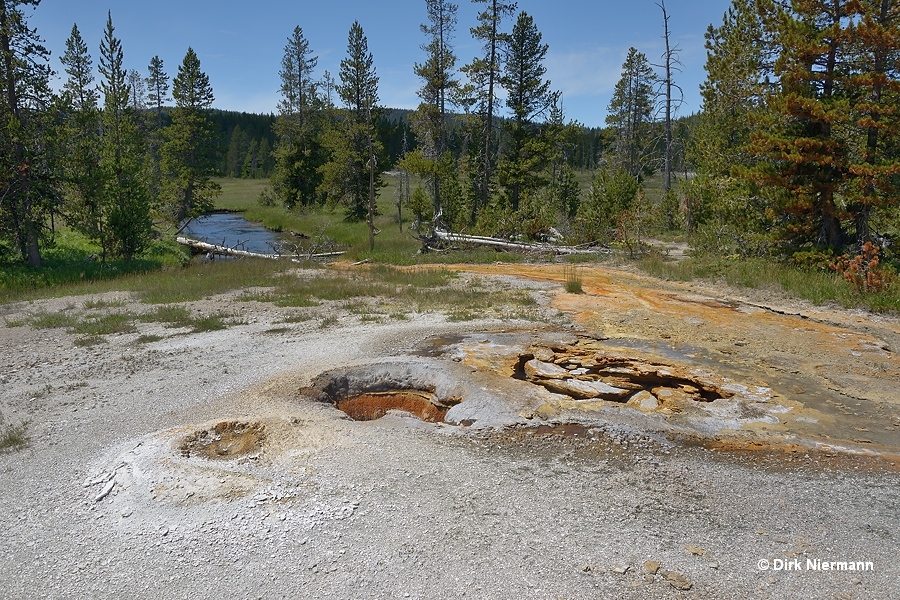
On our visit in August 2015 Little Giant Geyser's new vent (possibly a new geyser on its own, as T. Scott Bryan describes it as UNNG-SHO-26) played very regularly at intervals of approximately 30 minutes. The play lasted 10 to 15 minutes. Possibly it is cyclic, but we didn't watch long enough to confirm this.
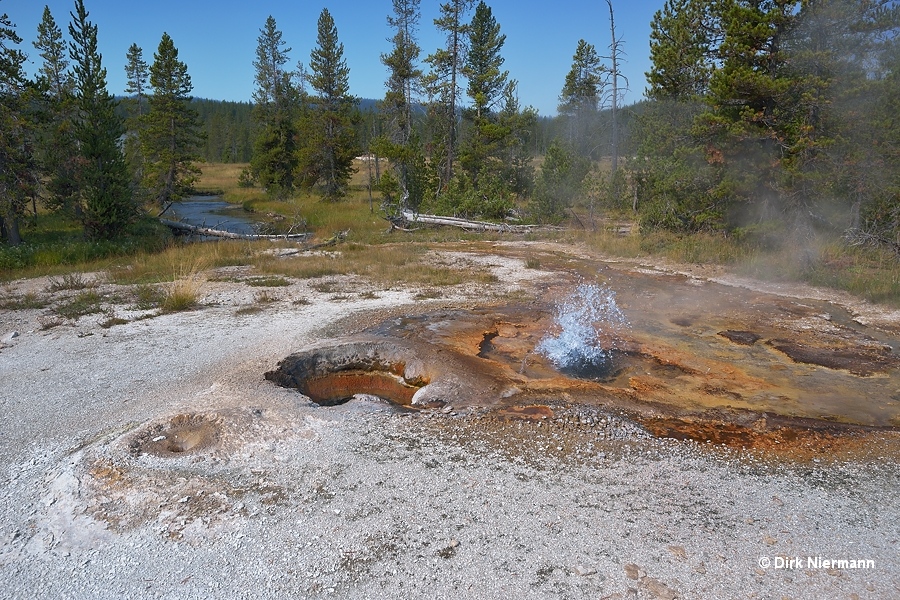
Neighbor of Little Giant Geyser to the southeast is double-vent spring SLGGNN034, looking like a geyser but not known to erupt. Some feet farther east lies Double Geyser, a frequent spouter.
